Resilience (re)building for a changing context: Women leading flood response efforts in Myanmar
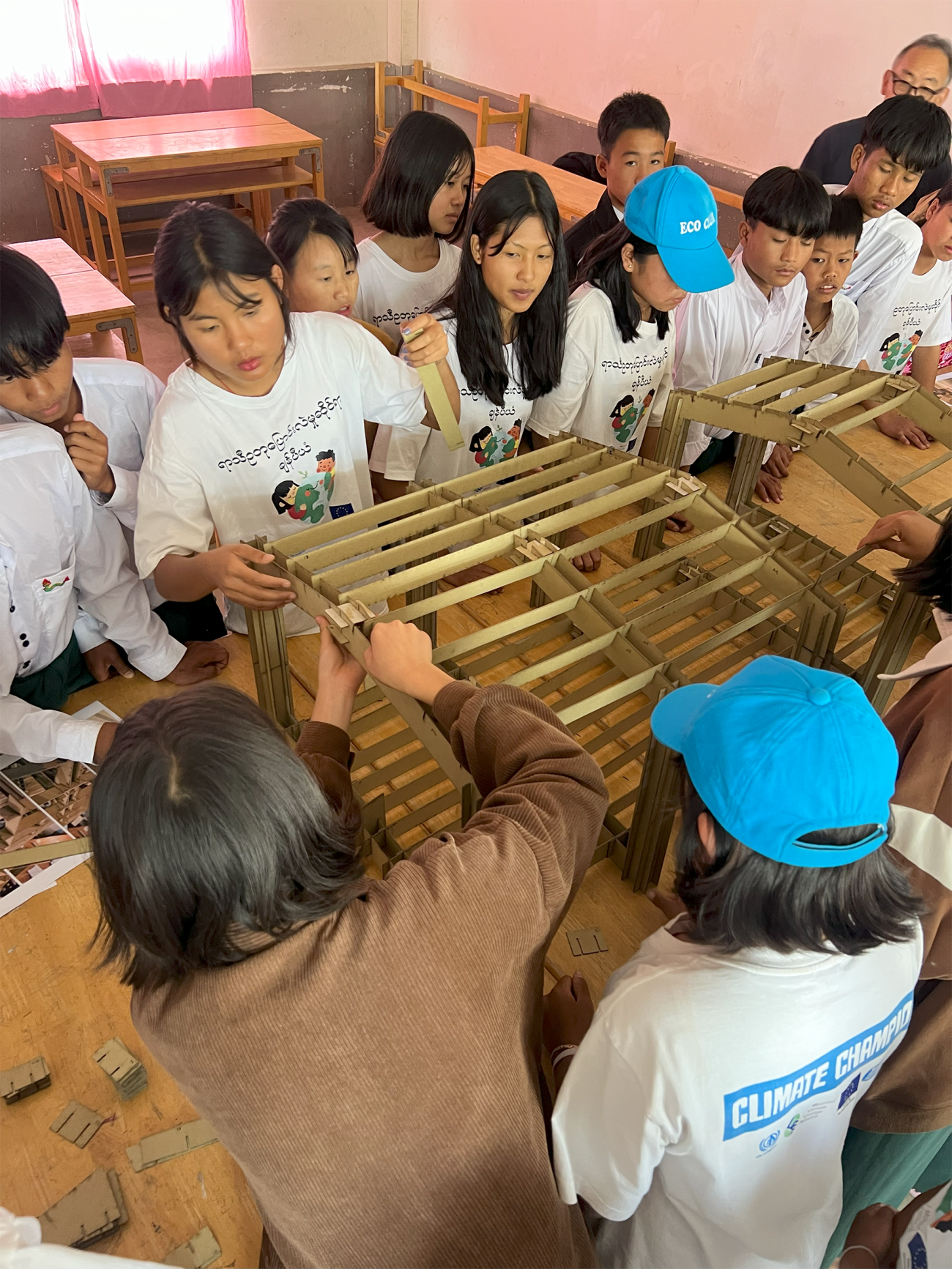
“UN-Habitat's flood response program empowers women to design and construct flood-resilient shelters for their communities in Myanmar's southern Shan State.”
Four years after the military takeover, with nearly half of the population living in poverty and essential services deteriorating, Myanmar is experiencing a deepening polycrisis. The country is embroiled in one of the world’s most violent and fragmented conflicts while also recovering from Typhoon Yagi, which unleashed widespread flooding in September 2024.
But amid these crises, a transformative approach to post-disaster reconstruction is unfolding in Myanmar’s southern Shan State. Local communities are forging alternative pathways for democratic participation and resilience, with women and girls emerging as agents of change in the region’s flood response. Supported by UN-Habitat, hundreds of female students and teachers at monastery schools are co-designing and building flood-resistant shelters for their communities.
"I never thought I could be part of building something so important,” says 16-year-old Ma Nan Win Myat Khaing, a grade 12 student in Myanmar who participated in one of UN-Habitat’s workshops on flood-resistant architecture. “Now, I understand how design can help protect our families from floods and disasters.”
In Myanmar, an estimated 28 million people live in areas with a high risk of flood exposure, resulting from years of unplanned urban expansion, deteriorating infrastructure, and the absence of risk-informed regulatory systems.
The country’s conflict has displaced nearly 3.5 million people, with climate change and disasters contributing to the cycle of displacement. Nearly one-third of this displacement is concentrated in the southeast, where conflict exacerbates existing vulnerabilities and communities grapple with the absence of coping mechanisms.
In April 2024, an intense heatwave with temperatures reaching 47.4°C claimed 1,473 lives, while Typhoon Yagi caused at least 226 fatalities months later, submerging over 48,500 acres of crops in Shan State and affecting over 150 villages.
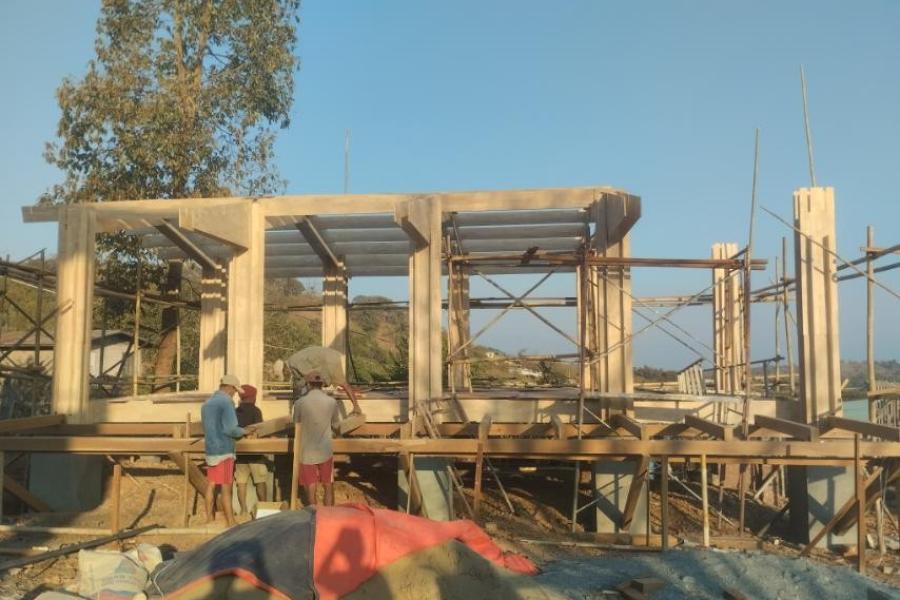
Among the most flood-affected areas were Kalaw and Taunggyi townships. Kalaw bore the brunt of the destruction, with 1,000 homes destroyed and critical infrastructure, including roads and communication networks, severely damaged.
To address these challenges, UN-Habitat’s flood-resistant shelter workshops have been uniting students, community members, teachers, and carpenters in these townships to co-design and build “veneer houses,” flood-resistant shelters made of locally available materials, like timber and bamboo.
The workshops and construction, which are being implemented under the Myanmar Climate Change Alliance Phase 2 (MCCA 2) programme, funded by the European Union, are taking place in two monastery schools whose students have been displaced by the conflict.
The students—the majority of whom are girls—are receiving support from dedicated female teachers, many of whom volunteer to not only provide education but also instill essential life skills—empowering young persons to voice their needs and participate actively in community recovery. The children are actively involved in these co-design processes, ensuring that the solutions reflect the unique needs of their communities.
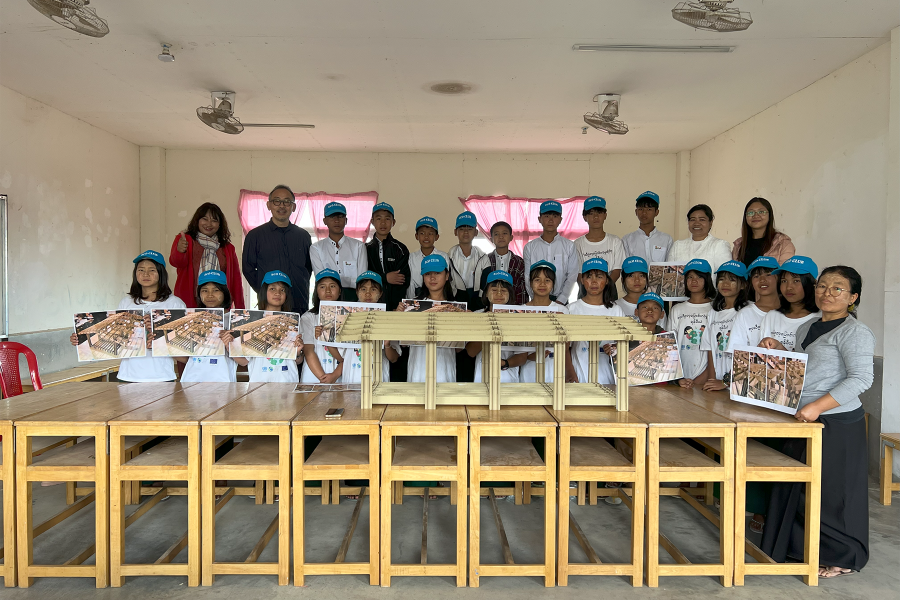
These efforts have been further enriched by the insights of housing expert Hiroto Kobayashi, a professor of architecture at Keio University in Japan who has helped facilitate the workshops. He provided expertise in harnessing local materials for sustainable construction techniques while making use of prefabricated elements for transitional and flood-resilient shelters.
The involvement of students and teachers in the construction process was key to fostering a sense of ownership. Nang Kan Bwar, a grade 12 student, expressed, "We are excited to finish work on this veneer shelter. It has changed how we look at bamboo and timber houses, and now we see them as beautiful and practical solutions for our community."
The workshops have not only provided essential skills but also encouraged collaboration. Students worked together to design their ideal living spaces and models, learning valuable lessons in teamwork and climate resilience. The impact of the workshop extended beyond just the physical construction. The community’s perspective on local materials, especially bamboo and timber, shifted as they recognized the value of these natural resources for building safe, sustainable homes. This shift in perception is crucial for the future of the community’s resilience efforts.
The shift in perspective on bamboo as a building material has resonated with local artisans like Ma Aye Aye Khine, a 38-year-old mother of two who crafts bamboo sheets for walling as part of her livelihood.
During UN-Habitat’s workshops on flood-resistant architecture, she expresses, "I used to think bamboo was only for small huts, but now I realize that, when used properly, it can be a strong and durable material for homes,” she says. “This project has shown me how bamboo can help build safer, stronger homes for our communities, and I’m proud to be part of the change in how we build in our region."
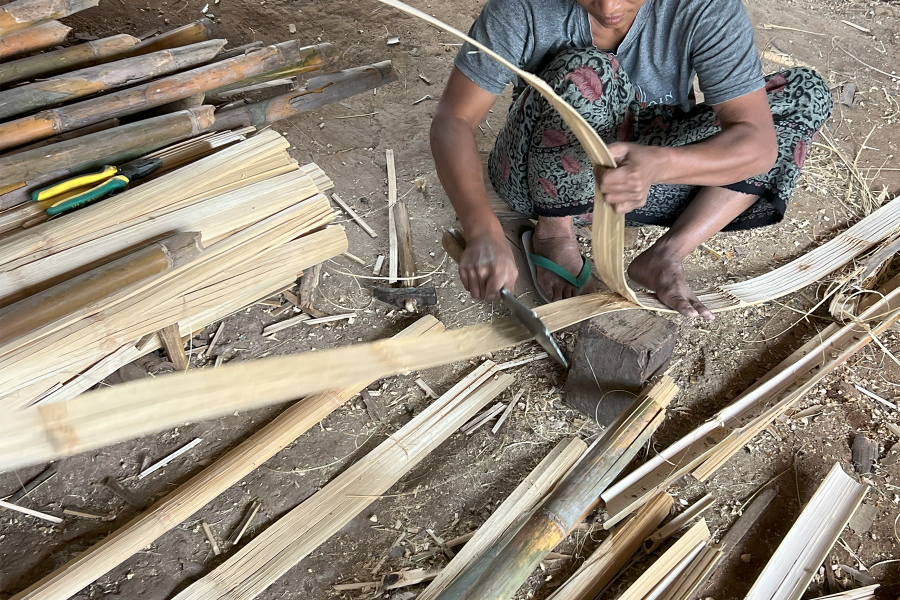
Daw Nang Kan Kywar, the principal of Pyinnar Ooyin Monastic School in Taunggyi township, expressed her gratitude to the donors and UN-Habitat for their support. In addition to addressing the school’s long-standing shelter challenges, the MCCA2-initiated project is also improving water access for the students and staff.
"We have over 1,000 students, but before the project, the lack of proper facilities made it difficult to provide a conducive environment for learning,” she explains. “Now, with the installation of the solar pumping system, we have accessible water, making a huge difference for both the students and staff."
She says these shelter solutions reflect both functionality and sustainability.
"There was a time when people looked down on bamboo and timber houses, often preferring brick buildings,” she says. “However, this veneer shelter has shown us that bamboo and timber can create beautiful, durable homes. People now value these natural materials, understanding the importance of trees and bamboo."
To Daw Nang Kan Kywar, the project has transformed the school and wider community perceptions. "Thanks to the support of our donors and UN-Habitat, we are not only addressing our water issues but also building a future where natural, locally available materials are valued for their beauty and sustainability,” she says. “Our students now have a space that reflects our commitment to both education and environmental respect."
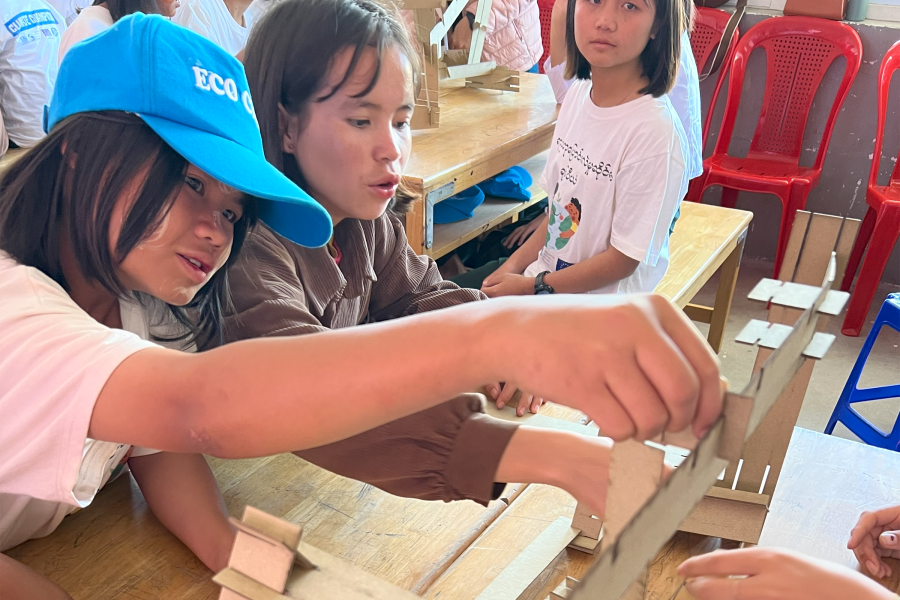
Looking ahead, training sessions for local carpenters, including women artisans, are scheduled for February as part of broader flood response efforts. These sessions will focus on advanced construction techniques using natural materials, while complementary initiatives in climate-smart agriculture, community rainwater harvesting, and renewable energy aim to bolster essential infrastructure.
In addition, these efforts offer alternative pathways for democratic participation by engaging local voices in decision-making and implementation. Implemented under MCCA 2, this comprehensive response places local women at the heart of resilience-building.
After participating in the workshop, Ma Nan Win says that working with her friends on the shelter model has shown her that they can find solutions together.
“Our teachers encouraged us to think about what kind of homes we want for the future,” she says. “This project helped me see that we can build strong, sustainable houses that truly belong to our community. Climate change is a big challenge, but we have the power to prepare.”
*This story was originally published on the UN-HABITAT Myanmar platform.

